Investment Insights: Real Estate and Infrastructure Growth in the CEMAC Region
Discover promising investment opportunities in CEMAC's real estate and infrastructure sectors, including affordable housing, commercial spaces, and energy. With urban growth and economic diversification underway, this region offers substantial potential for investors ready to navigate its unique market dynamics and capitalize on high-demand sectors like tourism, logistics, and transport.
11/5/20249 min read
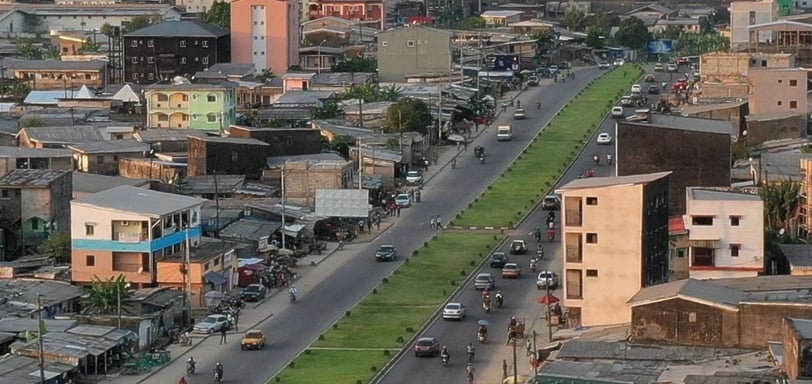

The Central African Economic and Monetary Community (CEMAC) includes six countries: Cameroon, Chad, the Central African Republic (CAR), Equatorial Guinea, Gabon, and the Republic of the Congo. These countries share a common currency, the Central African CFA franc (XAF), and a customs union.
The CEMAC region is endowed with significant natural resources, but it faces challenges such as political instability, underdeveloped infrastructure, and economic volatility due to reliance on oil exports. However, the real estate and infrastructure sectors are experiencing gradual growth, driven by urbanization, government initiatives, and international investments.
1. Overview of Real Estate and Infrastructure in CEMAC
The real estate and infrastructure sectors in the CEMAC region are primarily centered in urban areas like Yaoundé and Douala (Cameroon), Libreville (Gabon), Malabo (Equatorial Guinea), and Brazzaville (Republic of Congo).
Infrastructure gaps remain a major constraint to economic development, but governments are working on large-scale projects to improve connectivity and boost economic diversification.
2. Real Estate Market Trends in the CEMAC Zone
a) Residential Real Estate
Urbanization and population growth in cities like Douala, Yaoundé, and Libreville are creating increased demand for housing. However, the housing deficit remains a significant challenge across the region, particularly in lower-income housing segments.
Key Factors:
Housing Deficit: The CEMAC region faces a significant housing shortage, particularly in the low-cost and affordable housing sectors. Government initiatives to provide affordable housing are underway but progress is slow.
Middle- to High-End Housing: In major cities, demand for middle- to high-end residential developments is increasing, driven by expatriates, business professionals, and government officials.
Investment Opportunities:
Affordable Housing: The need for affordable housing is critical across the CEMAC region. Investments in low-cost housing development and innovative construction methods (e.g., prefabricated housing) present significant opportunities.
Middle- and High-End Housing: Real estate developers targeting the growing middle class and high-income earners, particularly in capital cities, can expect solid returns in high-end residential properties.
b) Commercial Real Estate
Commercial real estate is expanding in key urban centers, driven by the growth of local businesses, the expansion of international firms, and the rise of the services sector. However, the sector remains underdeveloped compared to other African regions, providing opportunities for investment in office space, retail, and industrial facilities.
Key Factors:
Office Space: In major cities like Douala, Yaoundé, and Libreville, demand for modern office spaces is rising as multinational corporations and regional businesses expand their operations. However, there is still a shortage of Grade A office buildings.
Retail Real Estate: The rise of consumer spending, particularly in Gabon and Equatorial Guinea, is driving demand for retail spaces, including shopping malls and commercial centers.
Industrial Real Estate: The CEMAC region's economic reliance on oil and natural resources has led to demand for industrial spaces, warehouses, and logistics facilities to support trade and resource extraction industries.
Investment Opportunities:
Office and Commercial Real Estate: Developing Grade A office buildings in capital cities, especially in Douala, Yaoundé, and Libreville, can meet the demand for modern, well-equipped business environments.
Retail Spaces: As consumer markets grow, there is increasing demand for modern shopping malls and retail centers in cities like Douala, Libreville, and Malabo.
Industrial Parks and Logistics Hubs: Investment in industrial real estate, including warehouses and logistics hubs, is vital to support trade, manufacturing, and resource-related activities.
c) Tourism and Hospitality Real Estate
The tourism sector in the CEMAC region is underdeveloped but offers significant potential, especially in Gabon and Equatorial Guinea, where natural beauty, wildlife, and eco-tourism are key attractions. Business travel, driven by oil and natural resource industries, is also supporting demand for hotels in key cities.
Key Factors:
Business Travel: Major cities in oil-rich countries like Gabon, Equatorial Guinea, and the Republic of Congo attract a steady stream of business travelers, creating demand for mid-range and luxury hotels.
Eco-Tourism: Gabon, in particular, has a unique biodiversity and is promoting itself as a high-end eco-tourism destination, which requires investments in luxury lodges and nature-focused resorts.
Investment Opportunities:
Business Hotels: There is demand for hotels and serviced apartments in cities like Libreville, Malabo, and Brazzaville to accommodate business travelers.
Eco-Tourism Developments: Gabon’s push to promote eco-tourism provides opportunities for investors in high-end lodges and eco-friendly resorts.
3. Infrastructure Development in the CEMAC Zone
Infrastructure remains one of the biggest constraints to growth in the CEMAC zone. However, there has been a concerted effort by governments and development partners to improve infrastructure, particularly in transport, energy, and telecommunications.
a) Transport Infrastructure
Transport infrastructure in the CEMAC region is underdeveloped, but significant projects are underway to improve roads, railways, ports, and airports to boost trade and regional integration.
Key Areas:
Road Networks: Poor road infrastructure is a major challenge, particularly in rural areas. However, major cities like Douala, Yaoundé, Libreville, and Brazzaville are seeing improvements in road networks. Regional road projects, such as the construction of highways linking CEMAC countries, are also underway.
Railways: Railway infrastructure is limited, with few cross-border rail connections. However, there are ongoing projects to revitalize existing railways, particularly to improve access to ports for landlocked countries like Chad and the Central African Republic.
Ports and Airports: The ports of Douala (Cameroon) and Libreville (Gabon) are key gateways for regional trade. Several countries are investing in modernizing their ports and airports to improve efficiency and accommodate growing trade volumes.
Investment Opportunities:
Road Construction and Rehabilitation: Investment in road infrastructure, particularly in regional highway networks, is crucial for improving connectivity between CEMAC countries and facilitating trade.
Port and Airport Expansion: The modernization and expansion of ports and airports, particularly in Cameroon and Gabon, present opportunities for public-private partnerships and investment in supporting infrastructure, such as logistics hubs and industrial zones.
b) Energy Infrastructure
Energy infrastructure is a major focus for governments in the CEMAC region, given the frequent power shortages and underdeveloped energy networks. There is increasing interest in renewable energy projects, particularly hydroelectric, solar, and wind energy, to meet growing demand.
Key Areas:
Hydroelectric Projects: Cameroon, with its abundant water resources, is investing heavily in hydroelectric power projects to boost electricity supply for domestic use and exports to neighboring countries.
Renewable Energy: Solar energy projects are gaining traction in countries like Chad and the Central African Republic, where large parts of the population remain off-grid.
Oil and Gas Infrastructure: Oil-rich countries like Gabon, Equatorial Guinea, and the Republic of the Congo are focusing on modernizing their oil and gas infrastructure to support production and exports.
Investment Opportunities:
Renewable Energy: There are significant opportunities to invest in renewable energy projects, including solar and hydroelectric power, to address the region's energy deficit.
Oil and Gas Infrastructure: Investment in refining, storage, and transportation infrastructure can support the growth of the oil and gas industry in Gabon, Equatorial Guinea, and the Republic of the Congo.
c) Telecommunications Infrastructure
The digital transformation is gradually taking place in the CEMAC region, with investments in telecom infrastructure, particularly mobile networks, fiber-optic cables, and internet access expansion. However, internet penetration remains low compared to other regions in Africa.
Key Areas:
Mobile Connectivity: Mobile phone penetration is relatively high in countries like Cameroon and Gabon, but access to mobile internet remains limited, particularly in rural areas.
Fiber-Optic Networks: Investment in fiber-optic networks is crucial to improving internet access and supporting the growth of the digital economy.
Investment Opportunities:
Telecom Infrastructure: Investors can support the expansion of mobile networks and fiber-optic cables, particularly in underserved rural areas.
Data Centers: With the growth of internet usage and digital services, there is a growing need for data centers and cloud infrastructure in the region.
4. Key Markets in the CEMAC Zone
Cameroon: Douala and Yaoundé are key cities for real estate and infrastructure development. The country is leading regional efforts to improve transport and energy infrastructure, and its growing middle class is driving demand for residential and commercial properties.
Gabon: Libreville is a hub for real estate development, particularly in high-end residential and commercial real estate. Gabon is also focusing on infrastructure improvements, including transport and energy projects, to support its oil and gas industries.
Equatorial Guinea: Malabo and Bata are experiencing growth in commercial and industrial real estate, driven by the oil sector. Infrastructure investments, particularly in transport and energy, are also key to the country’s development plans.
5. Challenges to Consider
Political Instability: Countries like the Central African Republic and Chad face ongoing political instability, which can pose risks for investors.
Land Ownership and Legal Framework: Land tenure systems in the CEMAC zone can be complex, with bureaucratic processes and unclear property rights often posing challenges for real estate development. In some countries, foreign investors face restrictions on land ownership, and navigating local land regulations can be difficult.
This creates a need for investors to conduct thorough due diligence and engage with local partners to understand land ownership issues.
Financing Constraints: Access to financing is a significant challenge in the CEMAC region. Mortgage markets are underdeveloped, and high-interest rates make homeownership unaffordable for a large part of the population.
This limits demand for residential properties and also creates barriers for real estate developers seeking financing for large-scale projects. Innovative financing models, such as micro-mortgages or rent-to-own schemes, could help unlock new opportunities.
Economic Dependence on Oil: Many CEMAC countries, particularly Gabon, Equatorial Guinea, and the Republic of Congo, rely heavily on oil revenues. This creates economic volatility, as fluctuations in global oil prices can significantly affect government revenues and overall economic stability.
Diversifying economies beyond oil dependency is a priority, but it will take time for sectors like agriculture, tourism, and manufacturing to gain momentum.
Infrastructure Gaps: The CEMAC region faces significant infrastructure deficits, which affect real estate development and broader economic growth. Poor transport networks, unreliable electricity, and limited access to clean water and sanitation services can increase construction costs and limit the marketability of new developments. '
However, these gaps also present investment opportunities for those looking to participate in infrastructure improvement projects.
6. Key Investment Opportunities in Real Estate and Infrastructure in the CEMAC Zone
Despite the challenges, the CEMAC region offers substantial opportunities for investors in both real estate and infrastructure development:
Affordable Housing: Governments in the CEMAC region are prioritizing affordable housing projects to address housing shortages. Public-private partnerships (PPPs) and international development funding provide opportunities for investors to participate in large-scale housing programs.
Investments in cost-effective building technologies and innovative construction methods can help lower construction costs and make housing more accessible to low- and middle-income populations.
High-End Residential and Commercial Real Estate: The capital cities of the CEMAC region, particularly Douala, Yaoundé, Libreville, and Malabo, are experiencing growing demand for luxury residential developments, office spaces, and commercial centers.
The influx of expatriates, business professionals, and government officials is driving demand for high-end real estate in these urban areas. Investors can focus on developing upscale apartments, office towers, shopping malls, and mixed-use developments.
Industrial and Logistics Parks: The region’s need for industrial facilities, warehouses, and logistics hubs presents a unique opportunity for real estate investors, particularly as intra-regional trade expands under the African Continental Free Trade Area (AfCFTA).
Industrial zones and logistics hubs in port cities like Douala and Libreville will be critical for supporting manufacturing and trade growth.
Transport Infrastructure Development: Investments in road, rail, and port infrastructure are essential to improving connectivity and trade in the CEMAC zone. Projects like the construction of regional highways and the modernization of key ports (e.g., the Port of Douala) offer opportunities for both private investors and international development partners.
PPPs and long-term concessions are common ways to finance and manage these large-scale infrastructure projects.
Energy Infrastructure: The need for reliable energy access across the CEMAC region is driving investments in both conventional and renewable energy projects. Hydroelectric power projects in Cameroon, as well as solar and wind energy projects in Chad and the Central African Republic, offer significant potential for investors.
Developing energy infrastructure will not only meet domestic demand but also create opportunities for electricity exports to neighboring countries.
Tourism and Hospitality: The untapped potential for eco-tourism, particularly in Gabon, provides opportunities for investors to develop resorts, lodges, and nature-based tourism infrastructure.
The growing demand for business travel in cities like Malabo, Libreville, and Brazzaville is also driving demand for mid-range and luxury hotels. Investment in recreational facilities, conference centers, and tourist attractions can help boost the region’s tourism sector.
7. Conclusion
The CEMAC zone presents significant opportunities for investors in real estate and infrastructure, especially in rapidly growing urban centers like Douala, Yaoundé, Libreville, and Malabo. The real estate market is evolving, with demand growing for affordable housing, luxury residential developments, and commercial properties.
In parallel, infrastructure gaps in transport, energy, and telecommunications provide substantial opportunities for investment in large-scale projects that will drive economic growth and regional integration.
Despite challenges such as regulatory complexity, political instability in some countries, and economic dependence on oil, the region is moving toward diversification and development.
Investors who can navigate the unique risks and opportunities in the CEMAC zone will find promising prospects, particularly in sectors such as housing, commercial real estate, energy, and transport infrastructure.
Successful investments will likely rely on strong partnerships with local governments, international organizations, and private stakeholders to overcome barriers and deliver impactful projects that meet the region’s growing needs.
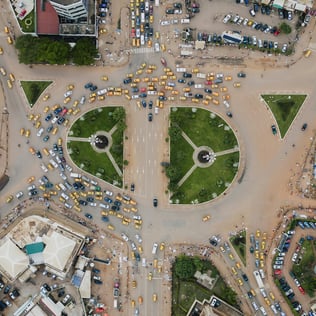
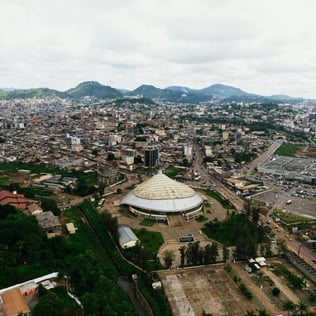
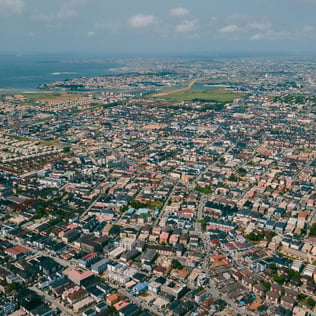
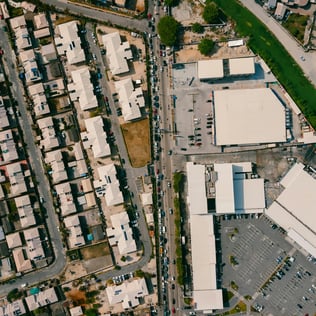
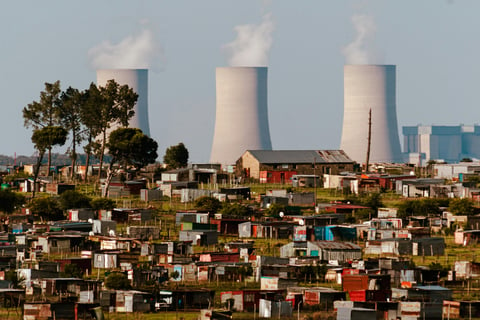

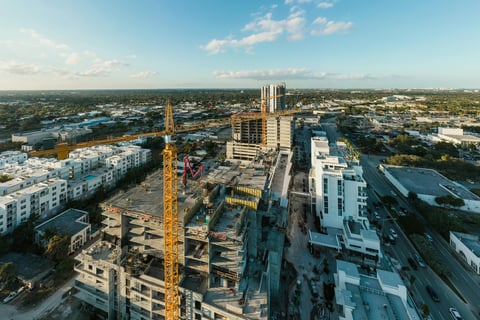

Are you considering investing in Africa and seeking guidance to navigate markets that align with your vision and investment needs?
At BBIMCO Company, we specialize in banking, investment management, and construction. Our team is dedicated to identifying secure and promising markets for your investments.
In management, BBIMCO acts as a liaison, establishing and operating businesses and organizations for foreign investors. We handle all aspects of construction, from residential and commercial to industrial projects.
We also offer development projects for those interested in partnerships and collaborations. Our seasoned team of architects, engineers, contractors, and real estate professionals is committed to meeting our clients' needs.
Contact us to explore how we can assist you in achieving your investment goals in Africa.

